Even though you may not need them to get a job, hiring managers still use cover letters to assess your qualifications, experience, and background. The secret to crafting a strong cover letter is to demonstrate how your work history aligns with the requirements of the available position and the hiring organization’s culture.
In this post, I will show you the steps to writing a cover letter that grabs the attention of possible employers.
Table of Contents
What is a cover letter?
A cover letter, which is also called an application letter, is a message that you send to employers (usually three to four paragraphs long) that explains your interest in the position, the firm, and why you are suitable for the job. It’s usually sent with your resume when you apply for a job.
Your resume should highlight your accomplishments, experience, and qualifications for the job you are applying for. In contrast to your resume, a cover letter gives you the chance to elaborate on your professional background and discuss why you’d be a good fit for the position and business.
Note that an effective cover letter can make an impression on employers and help you stand out from the competition. Before writing your cover letter, make sure you’ve done extensive research about the business and position you’re applying to to avoid producing a generic one.
What to do before you write
You should first assemble all the facts you could require before starting to write your cover letter. Before writing a cover letter, you should take into account the following:
- Consider your experiences and how you would like to present them to a potential employer. Which abilities, competencies, or achievements would you like the employer to be aware of?
- Consider how you found out about the job offer. Note the name and title of the person if it’s a personal contact. If it was a job board or advertisement, note where and when you saw it, along with any special instructions mentioned in the description of the position.
- Consider the reason you were drawn to the firm you are writing to. Do you respect its brand or culture? Are the reviews favorable or unfavorable? Do some research on the company to determine whether you share its vision and mission.
- Consider the reader of your work. If you are speaking to a specific individual, use their name and title. If not, you might want to write the cover letter to “Dear Human Resources” or “Dear Hiring Manager.”
Note that your cover letter is your chance to share your story, personality, and strengths. Therefore, you should not forget to write a cover letter in your rush to apply for a job.
Lastly, when you take your time to write a cover letter, it shows that you’re interested in the position and organization and are willing to go above and beyond for a great opportunity.
Format of a Cover letter
The structure of a cover letter should resemble that of a business letter and include the following sections:
- Header with date and contact information
- Salutation or greeting
- Opening paragraph
- Middle paragraph(s)
- Closing paragraph
- Letter ending and signature
Note that your cover letter should be one page long and written in a straightforward, business-like style (Helvetica or Arial, 10 to 12 points in size). Additionally, your letter should have one-inch margins on all sides, single spacing, and left alignment.
6 steps to writing a Cover Letter
Here are six easy steps to help you write a killer cover letter: I’ll provide thorough instructions and examples of what to put in each area in the sections that follow.
1. Begin with your header.
You should add some personal and role-specific information at the start of your cover letter, just like you would with any other typical business letter header. You can align your name and address in the center of the page, just as on your resume, if you’d like.
- Your name
- Your city and ZIP code
- Your phone number
- Your email address
- Date
- Name of the recipient
- Title of recipient
- Company name
- Company address
Header example:
John Smith
123 Main Street, Anytown, USA
(555) 123-4567
johnsmith@example.com
April 24, 2024
Jane Johnson
Human Resource Manager
ABC Corporation
456 Elm Street, Anytown, USA
2. Add a greeting.
Here, you should look for the name of the individual evaluating job applications during your research. Use a standard business greeting when addressing your letter to this person, such as “Dear [first and last name]” or “Dear [position title].” Do not use the phrase “to whom it may concern.”
Greetings example:
- Dear Hiring Manager,
- Dear `Jane Doe,
3. Write an opening paragraph.
Here, you should mention the job title and the source of the job posting in the opening paragraph of your application. Show that you have done your research by explaining why you are interested in the position and organization. It’s crucial to make an immediate and strong impression on the reader in the opening section of your cover letter, as it serves as their initial introduction to you.
Opening paragraph example:
“I’m excited to apply for the Content Writing at ADC Concepts I found online. I understand you’re currently launching a new site, and I believe my content writing and research give me a significant advantage for the job. I’ve been a lifelong admirer of your platform; therefore, I’m ecstatic about the chance to contribute my distinct style to the business.”
4. Add a second paragraph.
In this session, you should provide a summary of your experience that is relevant to the role. Mention your most notable accomplishments, abilities, and areas of expertise that make you a strong fit for the role. Pick just one or two, and describe your success in detail, including any quantifiable contributions you made. Keep an eye out for keywords in the job description and incorporate those that resonate with you into the body of your cover letter. Note that only details regarding your most recent work experiences should be included.
Second paragraph example:
“As the Head of Content at Desk Walkers Inc., I was responsible for improving the efficiency and performance of written content on the company’s platforms. Before that, I worked as an SEO content writer for Benstik Limited. There, I was able to come up with content plans that led to a 50% increase in views.”
5. The closing paragraph
In the final paragraph, you should highlight one more noteworthy accomplishment or position-relevant skill. Instead of restating information from your CV, you should condense a particular narrative or incident that demonstrates your suitability for the position. This is an excellent chance to discuss transferrable talents or related experiences from your work if you’re changing careers.
Closing paragraph example:
“My goal has always been to create awareness about our products through the platforms. Getting views to the site through quality content has always been my top priority, and I am always looking out for the company’s best interests. I’m never content with the status quo and think a business should always be searching for new and creative ways to reach out to potential customers.”
Read Also:
Download Sample of Different CVs – Format and Templates
How to write an attention-grabbing Job CV
Europass CV: How to Create a European-Style CV in 2024
6. End with a professional signoff.
This is a paragraph summarizing your reasons for applying for the position and why you would be a fantastic fit. It should come at the end of your cover letter. At the end, you should mention that you’re eager to hear from the employer about any potential next steps. Then put your signature at the bottom to finish.
Signoff example:
“I appreciate your thoughtfulness and time. I’m eager to find out more about ABC Concepts and the content writing role. My future success depends on my ability to grow, so I’m thrilled about the opportunity to join the team. ABC Concepts platforms and my track record of success work well together to grow the company’s market share. Regards, Malik Rabb
To see example cover letters for your job and industry, check these free Cover Letter Samples.









